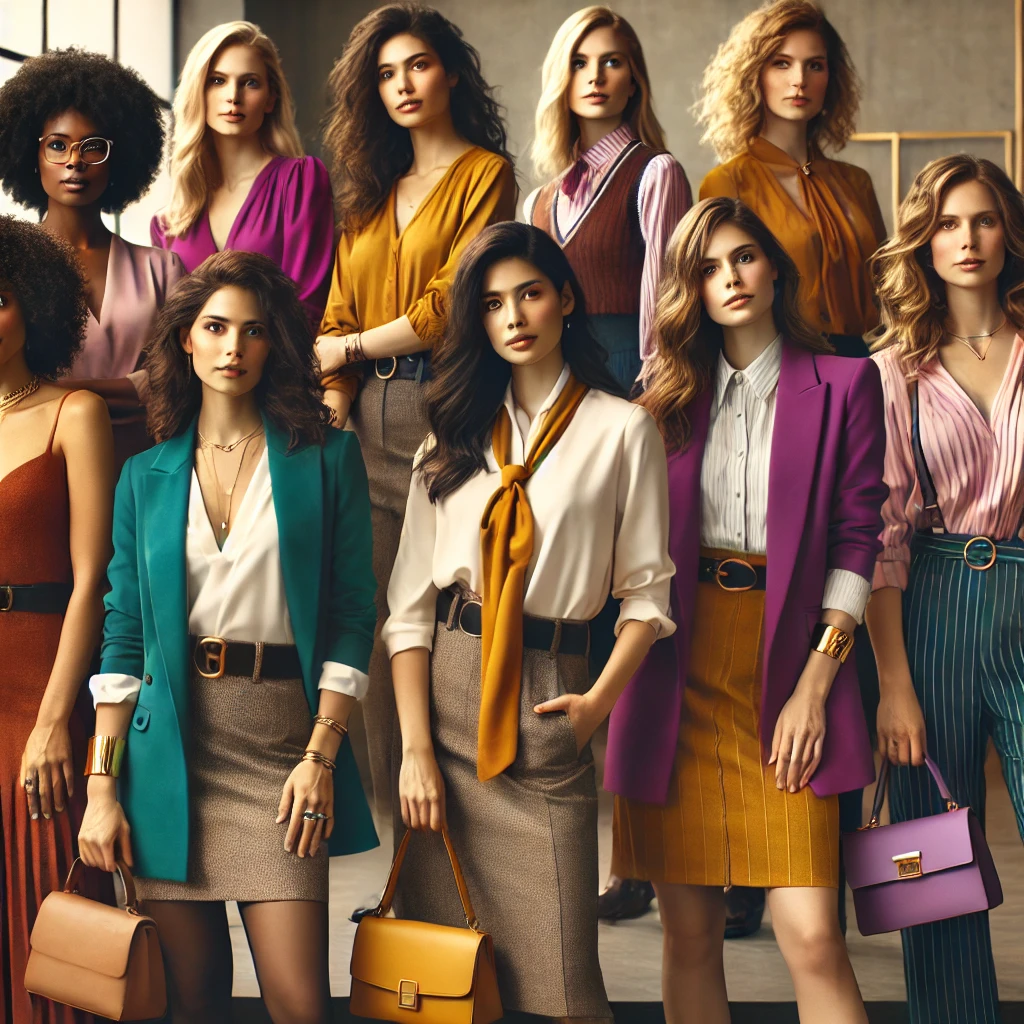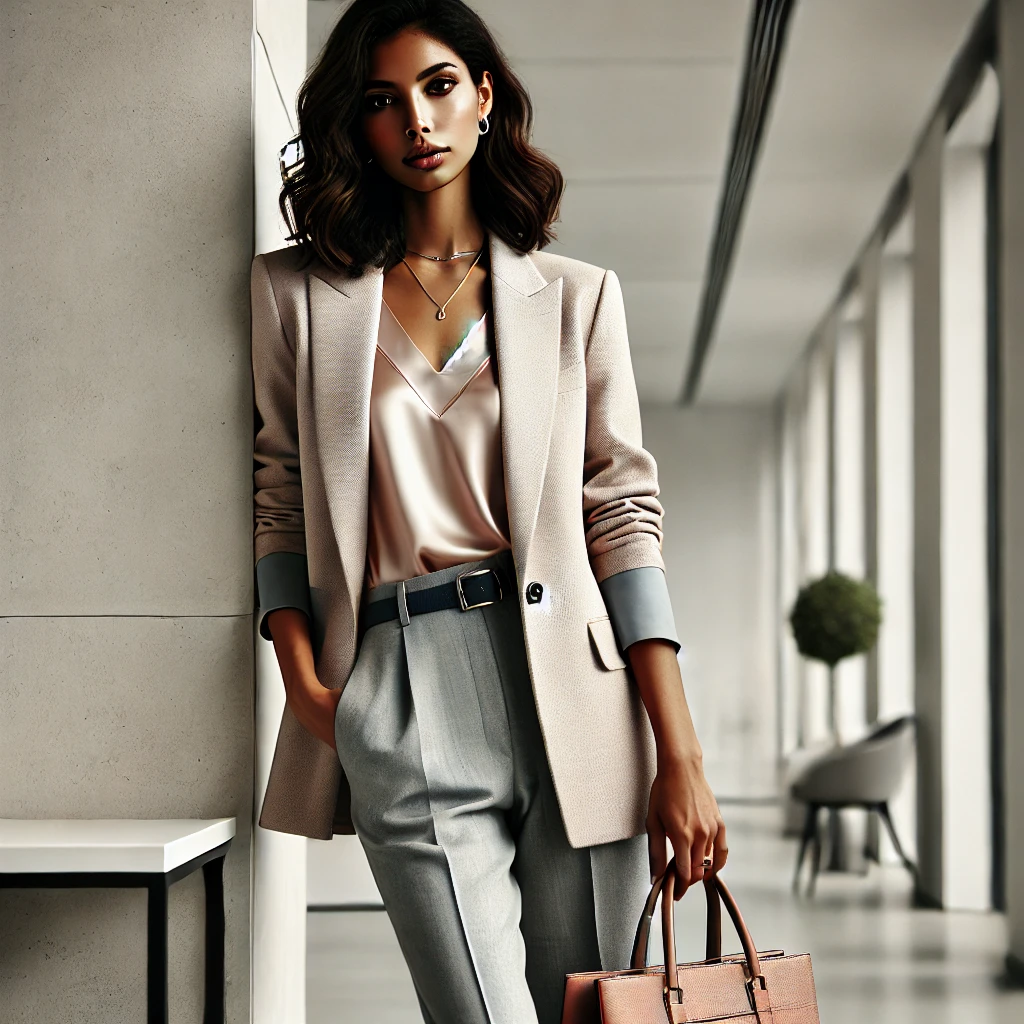
Navigating the dress code maze can be tricky, especially when it comes to business casual for women. The term often leaves people puzzled – how casual is too casual? Where does business come in? Striking a balance between professionalism and comfort is key, and this guide is here to make the process seamless. Whether you’re gearing up for your first office job or updating your wardrobe, mastering business casual is easier than you think.
A professional appearance goes beyond just following the rules; it’s about presenting yourself as confident, capable, and approachable. A thoughtfully curated wardrobe not only helps you feel your best but also influences how others perceive you in the workplace. By understanding the basics of business casual and tailoring it to your unique style, you can create a look that works in every professional setting while staying true to your personality.
What Is Business Casual?
Business casual bridges the gap between formal business attire and everyday casual wear. It’s professional enough for the workplace but relaxed enough to ditch the suit jacket. While definitions vary slightly depending on the industry and company culture, business casual typically includes tailored pieces with a polished yet comfortable aesthetic.
Here’s a quick breakdown:
| Category | Examples | Avoid |
|---|---|---|
| Tops | Blouses, button-down shirts, sweaters | Tank tops, graphic tees, overly revealing tops |
| Bottoms | Dress pants, pencil skirts, tailored chinos | Ripped jeans, shorts, mini skirts |
| Shoes | Loafers, ballet flats, ankle boots, low heels | Flip-flops, sneakers, sky-high stilettos |
| Accessories | Simple jewelry, leather belts, scarves | Large statement pieces, overly flashy items |
Key Pieces for a Business Casual Wardrobe
Building a business casual wardrobe requires versatile staples that can be mixed and matched. Here’s a curated list of essentials:
1. Blouses and Button-Down Shirts
A crisp white blouse or a tailored button-down shirt is a classic. Opt for breathable fabrics like cotton or silk and explore subtle patterns like pinstripes or florals for variety. Avoid sheer materials unless layered appropriately.
2. Tailored Pants
Slim-fit or wide-leg trousers in neutral tones like black, navy, or beige are timeless choices. They pair effortlessly with various tops and add a refined touch to your outfit.
3. Knee-Length Skirts
Pencil skirts or A-line styles in solid colors or understated patterns strike the right balance. Ensure they fall just above or below the knee for a professional look.
4. Cardigans and Blazers
A well-fitted blazer instantly elevates any outfit. For a softer touch, opt for structured cardigans that add warmth and sophistication.
5. Comfortable Yet Stylish Shoes
Ankle boots, loafers, or classic ballet flats work well. A modest heel, like a block or kitten heel, can add an elegant touch without sacrificing comfort.
6. Dresses
Shift dresses and wrap dresses in neutral tones or muted prints are fantastic for business casual settings. Look for pieces with clean lines and minimal embellishments.
7. Accessories
Keep it minimal. A delicate necklace, stud earrings, or a slim leather belt can add subtle flair without being distracting.
Styling Tips for Workplace Elegance
Know Your Company Culture
Before revamping your wardrobe, observe what your colleagues are wearing. A tech startup’s version of business casual will differ from a corporate law firm. Err on the side of formal if unsure.
Stick to a Cohesive Color Palette
Neutral colors like black, white, navy, beige, and gray form a solid foundation. Add subtle pops of color – like pastel pink or burgundy – to keep things interesting without going overboard.
Invest in Quality Fabrics
Natural materials like cotton, wool, or silk not only look polished but also feel comfortable throughout the day. They’re also more durable, making them worth the investment.
Focus on Fit
Ill-fitting clothes, no matter how expensive, will look unprofessional. Tailored pieces that fit well are key to appearing polished and confident.
Layer Smartly
Layering is both functional and stylish. Pair a lightweight sweater with a button-down shirt or drape a blazer over a dress for a professional yet approachable look.
Avoiding Common Mistakes
Overly Casual Choices
While business casual allows for some flexibility, items like ripped jeans, leggings, or sneakers are typically off-limits unless explicitly permitted.
Ignoring Maintenance
Wrinkled or stained clothing instantly diminishes your appearance. Keep your outfits clean, pressed, and in good condition.
Overloading on Accessories
While accessories can personalize your look, too many can appear distracting or unprofessional. Keep it simple and tasteful.
Wearing Ill-Suited Shoes
Comfort is crucial, but that doesn’t mean sacrificing style. Leave the gym sneakers and flip-flops at home, opting instead for professional footwear with a comfortable fit.
Seasonal Considerations for Business Casual
Spring/Summer
Lightweight fabrics like linen and cotton are ideal for warmer months. Pair a pastel blouse with ankle-length trousers or wear a breathable midi dress with flats.
Autumn/Winter
Opt for wool or cashmere sweaters layered over collared shirts. Knee-high boots paired with a pencil skirt and tights make for a chic winter look. Add a tailored coat to keep things professional and weather-appropriate.

Shopping Tips for Business Casual Essentials
Set a Budget
Building a wardrobe doesn’t have to break the bank. Allocate a budget and prioritize versatile staples over trendy pieces.
Shop Secondhand
Thrift stores and online platforms often carry high-quality items at a fraction of the cost. This is a great way to find unique pieces while saving money.
Look for Sales
Keep an eye on seasonal sales to score deals on classic items. Investing in quality staples during discounts can save you a significant amount in the long run.
Choose Mix-and-Match Pieces
When shopping, think about how each item will pair with what you already own. Versatility is key to making the most of your wardrobe.
A Sample Business Casual Outfit Formula
For inspiration, here’s a simple outfit formula that’s universally flattering and appropriate for most workplaces:
- Top: A fitted blouse or button-down shirt
- Bottom: Slim-fit trousers or a knee-length skirt
- Outer Layer: A tailored blazer or cardigan
- Shoes: Neutral-colored loafers or low-heeled pumps
- Accessories: A delicate necklace and a structured tote bag
Why Business Casual Matters
Your appearance is often the first impression you make, especially in professional settings. Dressing in business casual demonstrates that you’re polished, prepared, and take your role seriously. It can also boost your confidence and set the tone for workplace interactions.
By following this guide, you can cultivate a wardrobe that not only meets workplace standards but also reflects your personal style. Whether you’re stepping into a new role or looking to refresh your look, mastering business casual is a step toward workplace elegance and confidence.

